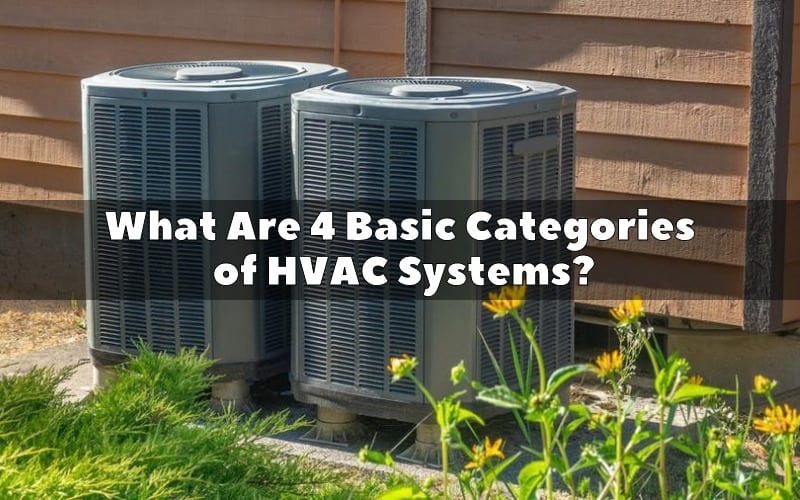When it comes to maintaining a comfortable indoor environment, understanding HVAC (Heating, Ventilation, and Air Conditioning) systems is crucial for homeowners and businesses alike. HVAC systems are central to climate control, ensuring that spaces are heated or cooled efficiently to enhance comfort and functionality. Let’s dive into the four basic categories of HVAC systems, each possessing unique characteristics and applications.
1. Split Systems
Split systems are among the most prevalent HVAC designs. These systems comprise two main components: an indoor unit and an outdoor unit. The indoor unit typically houses the evaporator coil and the air handler, while the outdoor unit contains the compressor, condenser, and expansion valve. The two units are linked by refrigerant lines and electrical connections that facilitate the transfer of heat.
The inception of split systems revolutionized temperature regulation by allowing homeowners to efficiently cool or heat specific zones within a residence. One of the key benefits of split systems is their adaptability. They are available in various configurations and can be tailored to meet the unique spatial requirements of any property. For larger homes, multiple indoor units can be connected to a single outdoor unit, ensuring even distribution of temperature across different spaces.
Moreover, the quiet operation of split systems is a significant advantage. With outdoor compressors operating at a distance from indoor living areas, noise levels inside the home remain relatively low. For energy-conscious consumers, many modern split systems boast variable-speed compressors that optimize energy usage, thereby reducing utility costs while maintaining desired temperature levels.
2. Central HVAC Systems
Central HVAC systems are characterized by their ability to regulate temperature across entire buildings, making them a popular choice for larger homes and commercial structures. Unlike split systems, which may serve individual zones, central systems distribute conditioned air through a network of ducts, which can lead to inconsistencies in temperature while requiring meticulous design and installation.
Typically, a central system consists of a furnace or heat pump for heating, and an air conditioner for cooling. The efficiency of central systems often hinges on the ability to properly seal and insulate ductwork. Leaky ducts can result in significant energy loss, undermining the effectiveness of the system. Thus, a well-maintained duct system is paramount to the success of a central HVAC installation.
Furthermore, the use of programmable thermostats enhances the performance of central HVAC systems. These devices allow homeowners to set schedules and adjust temperatures based on occupancy, leading to greater energy savings and comfort. Additionally, advancements in zoning technology permit different areas of a building to be heated or cooled independently, further improving efficiency and satisfaction.
3. Packaged Systems
For those seeking a compact solution, packaged HVAC systems offer an intriguing alternative. These systems consolidate all major components—such as the compressor, evaporator, and condenser—into a single unit, which is typically installed on the roof or on a concrete slab beside the building. This design is particularly advantageous for commercial spaces or homes lacking the necessary interior space for separate units.
With packaged systems, the elimination of extensive ductwork can simplify installation and, in many cases, reduce overall system costs. However, it’s essential to perform regular maintenance on these systems, as their all-in-one design can lead to complicating repairs and necessitate more frequent service interventions.
Packaged systems come in various configurations—some combine heating and cooling, while others may utilize a separate heat source. This versatility allows them to cater to a diverse array of climate conditions and architectural styles, making them an enticing option for many consumers.
4. Ductless Mini-Split Systems
As sustainability and energy efficiency trends continue to proliferate, ductless mini-split systems have emerged as an increasingly popular choice among eco-conscious homeowners. These systems feature an outdoor compressor unit and one or more indoor air-handling units that are mounted on walls or ceilings. Unlike conventional systems, ductless mini-splits do not rely on ductwork, making them exceedingly efficient in terms of energy usage.
One notable aspect of ductless mini-split systems is their “zoning” capability. Each indoor unit can be controlled independently, allowing occupants to adjust temperatures in individual spaces. This not only maximizes comfort but also conserves energy, as unoccupied rooms can be kept at lower temperatures or turned off altogether.
Ductless systems also boast enhanced air quality. Many units come with filtration systems that effectively capture airborne particles, ensuring that the air circulated within the home is clean and healthy. Moreover, the installation process is typically less invasive than traditional systems, as only small holes are needed to connect the indoor and outdoor units, leading to minimal disruption during setup.
Conclusion
In conclusion, understanding the four basic categories of HVAC systems—split systems, central systems, packaged systems, and ductless mini-split systems—empowers homeowners and property managers to make informed decisions about their heating and cooling needs. Each system has its distinct advantages, and the choice often depends on factors such as the size of the space, budget constraints, and specific climate requirements. Whichever system you select, investing in a quality HVAC solution is essential for maintaining a comfortable and efficient indoor environment.
